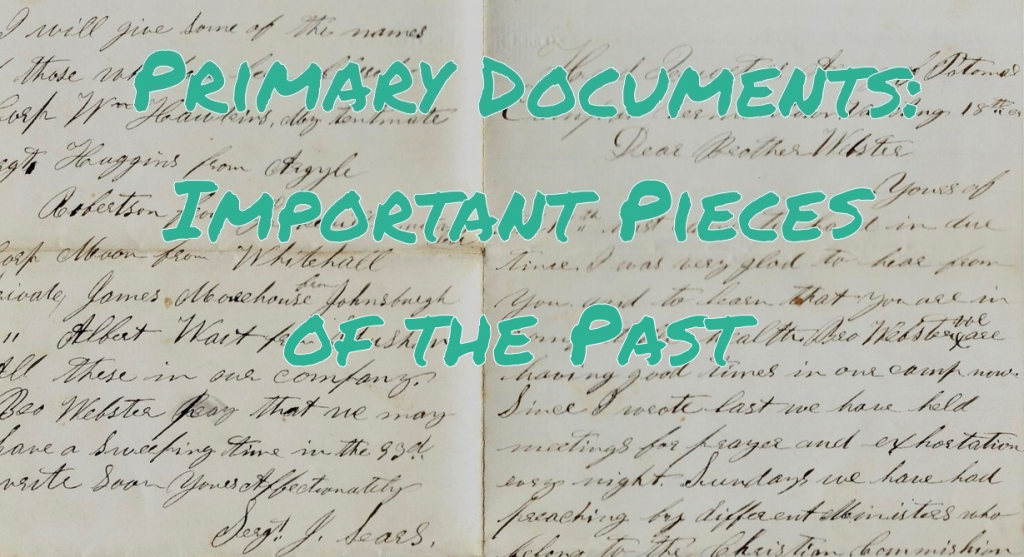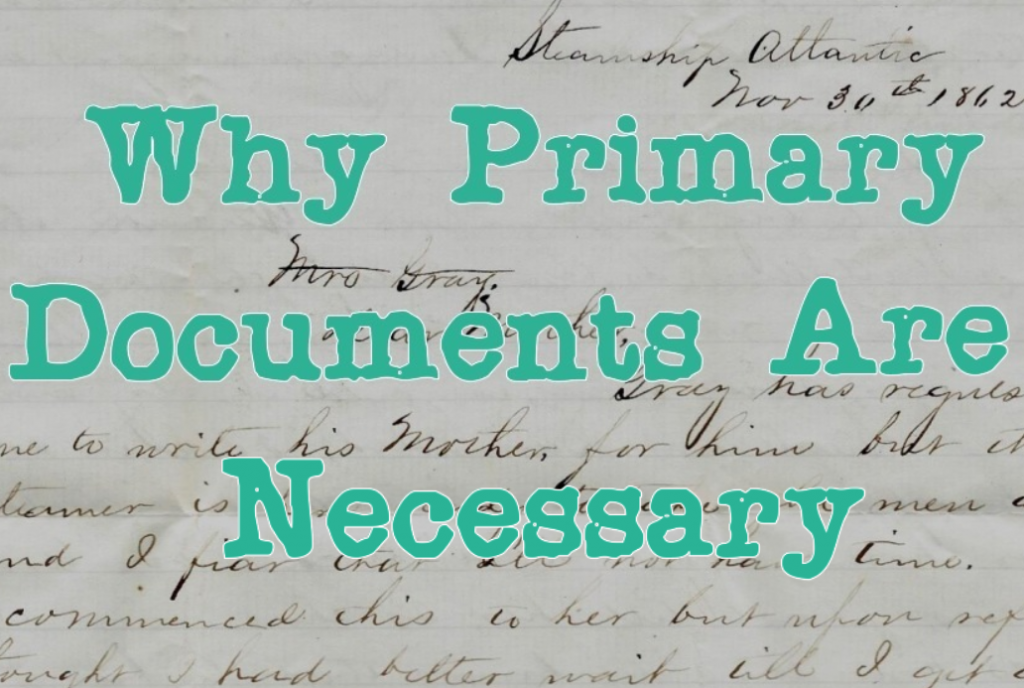
For a long time, I’ll admit that I was apprehensive of collecting historic primary documents. The fragility of the paper, coupled with the fact that forgeries may exist, left me hesitant to enter the realm of letter collecting. But that changed in 2017, when I was gifted my first letter written by Sewall Adams, a Civil War soldier in the 127th New York Infantry. Now, I have 13 letters in my personal collection that were penned by soldiers from different regions and socioeconomic backgrounds. (Head here to read letters in my collection.) For now, let’s explore what primary documents are and why they’re important to historians and genealogists alike.


What constitutes a primary document? Newspapers, letters, diaries, photographs, and even drawings that are original and from the particular era of history you’re studying can be considered primary documents. For example, a letter written during 1861-1865 (or the few years before and after) may be considered a primary document pertaining to the Civil War.
If you’re instructed for a school assignment, historic presentation, or other scholarly setting to use primary sources, primary documents and books (like memoirs from a particular era) are great options to use! On the flipside, secondary sources are those written after the era you’re studying. This means that a book about World War II that was written in 2011 would be considered a secondary source if it’s written by someone who didn’t experience the 1940’s conflict first-hand. So if you’re advised to use primary sources, be sure to avoid secondary ones!


We now know that primary documents are era-specific, but does this make them necessary to further our understanding of history and genealogy? Absolutely! Primary documents allow us to recognize the psychology and thought processes behind people who lived in past eras. Through letters in my collection, I’ve repeatedly realized that, for Civil War soldiers, letters from home were not only craved–they were coveted. In fact, if a combatant’s family member took too long in writing a missive back, soldiers were sure to let their families know that the lag time wasn’t appreciated!
Besides allowing us to understand the past on a social level, it also helps us to understand history as a whole. When soldiers write about large battles and gallant charges, we’re able to gain a better understanding of the time from those who actually lived it. Primary documents can also help us recognize political problems of the past and even weather trends! A recent letter I acquired and that was penned from Murfreesboro, Tennessee, attests that the weather in the South was different than what the Wisconsin-born soldier was used to. Plus, by late March 1862, trees and plants were already budding out.
Wondering how this pertains to genealogy? You just might be able to uncover primary documents from your own family (you can even search newspapers for a mention of their names). Trust me, there’s not much that’s more rewarding than discovering additional information about your family through diary entries, letters, and other primary sources. While censuses and marriage documents are great, they don’t show you the inner thoughts of your ancestors, nor do they let you know what happened in your family member’s life. Primary documents can enhance your search tenfold, though!
Even if you don’t uncover a primary source written by your ancestors, don’t give up. Primary sources from the area your family lived–or the time frame they experienced–might mention your ancestors (I have several primary documents that detail other people). Or, at the very least, looking at the thoughts of someone from the same region and era as your ancestors might give you a better idea about what was going on in your family member’s world. For these reasons, among others, primary documents are invaluable research tools for historians and genealogists alike.

Now that you have a better idea on what primary documents are–and how they’re important–stay tuned! Don’t forget to check out examples of Civil War soldier letters here. Or on hop on over here to get tips on how you may be able to add letters and other primary documents to your own collection! Exciting things are happening here on Kassidy’s Corner that you won’t want to miss.
Keep the History Alive!


